- Written By Team DWS
- Jewelry Trends
- August 07, 2025
The World's Top 50 Jewelry Importing Countries: A Detailed 2025 Overview
The global jewelry trade is vast, intricately tied to culture, fashion, economic cycles, and the flow of precious resources. Jewelry, encompassing everything from gold and silver pieces to luxury watches and diamond accessories, is one of the most universally traded luxury goods categories. In 2025, the jewelry import market continues to be led by a mix of Western economic powerhouses, Asian gems hubs, and countries with strong cultural ties to jewelry consumption.
Below is a detailed exploration of the 50 leading jewelry importing countries, providing insights into their market characteristics, trends, leading products, and their unique roles within the international jewelry trade.
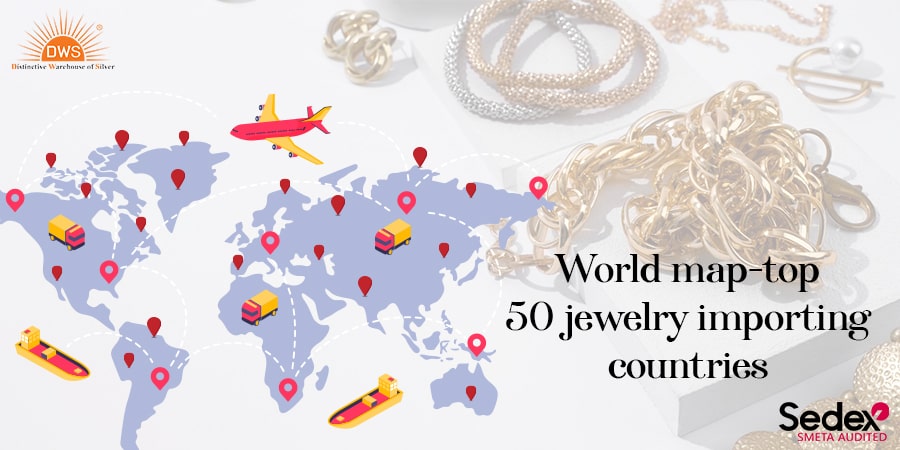
1. United States
The United States remains the most significant jewelry importer by value globally. American consumers have a strong appetite for luxury and branded jewelry, especially for diamonds and gold items. The demand extends from mass-market chains to high-end designers. The US also serves as a global trendsetter, influencing jewelry styles worldwide.
2. China
China’s wealthy consumers are rapidly increasing their demand for imported fine and luxury jewelry. The middle class's expansion, rapidly shifting consumer preferences, and a surge in high-net-worth individuals fuel the sector. China is also a critical gateway for gold and gemstone jewelry in Asia.
3. Hong Kong SAR
Hong Kong operates as Asia's jewelry trading and distribution hub. Its imports are not just for local consumption but also for re-export to Mainland China and other Asian markets. Hong Kong’s tax advantages and status as a luxury shopping destination have made it a top-ten jewelry importer for decades.
4. Switzerland
Known for its luxury watch industry, Switzerland also ranks as a top importer of finished jewelry, precious metals, and gemstones. Much of these imports feed into the country’s globally renowned luxury goods sector, including the manufacture of high-end jewelry and timepieces for export.
5. United Arab Emirates (UAE)
The UAE, especially Dubai, stands as the Middle East’s primary jewelry market and a global gold trading center. The country’s duty-free shopping and cosmopolitan customer base drive consistently high levels of imports. The UAE is a strategic re-exporter into Africa, South Asia, and Europe.
6. India
India is not only a major exporter but also a leading importer to meet domestic demand and complement local manufacturing. Imported diamonds, gold, and gemstones are vital for the bustling Indian jewelry manufacturing sector.
7. United Kingdom
The UK is a large jewelry importer, particularly for luxury, designer jewelry, and watches. London is a hub for high-value auctions and sales, further driving import demand, including a strong appetite for vintage and heritage pieces.
8. Singapore
Despite its small size, Singapore’s status as a financial, tourism, and luxury shopping center in Southeast Asia makes it a key importer of jewelry, catering to both local elites and international travelers.
9. France
France’s cultural reputation for fashion and style extends to its jewelry market. Imports feed both direct consumer sales and the fashion industry's creative supply chain, with Paris serving as a global luxury goods capital.
10. Japan
Japan’s refinement in jewelry taste, emphasis on quality and artistry, and high purchasing power position it as a consistent top-tier importer of fine, designer, and branded jewelry, as well as pearls.
11–50: Expanding the Global Landscape
These countries, while varying in population, GDP, and regional influence, are unified in their rising or consistent demand for imported jewelry:
| Rank | Country | Notable Market Characteristics |
| 11 | Italy | Luxury, fashion, tradition, and design expertise |
| 12 | Thailand | Tourist-driven market, gems, and silver jewelry |
| 13 | Germany | Premium brands, affluent middle class |
| 14 | Saudi Arabia | Strong gold tradition, high per capita expenditures |
| 15 | Canada | Multiethnic demand, high-end urban centers |
| 16 | Türkiye | Growing luxury market, regional gold hub |
| 17 | Belgium | Antwerp—legendary diamond trade center |
| 18 | South Korea | Pop culture fashion trends drive niche imports |
| 19 | Australia | Demand for pearls and opal jewelry |
| 20 | Israel | Large diamond cutting/retail sector |
| 21 | Spain | Resort-driven sales, high street fashion integration |
| 22 | Russia | Jewelry gift culture, luxury segment |
| 23 | Malaysia | Urban luxury, Islamic gold jewelry market |
| 24 | Austria | Central European luxury market |
| 25 | Vietnam | Rising affluence, tradition of gold jewelry |
| 26 | Kuwait | High-end, gold-rich jewelry, expat and local demand |
| 27 | South Africa | Gold, platinum; strong tradition of jewelry gifting |
| 28 | Netherlands | Fashion and contemporary jewelry focus |
| 29 | Indonesia | Middle class growth, silver jewelry popularity |
| 30 | Poland | Emerging demand, especially among youth |
| 31 | Qatar | Ultra-luxury, high-end Middle East segment |
| 32 | Sweden | Minimalist Scandinavian fashion/lifestyle |
| 33 | Brazil | Regional gemstone jewelry, rising urban wealth |
| 34 | Taiwan | Upmarket urban retail landscape |
| 35 | Portugal | Tradition and tourism-driven jewelry sales |
| 36 | Philippines | Mall-based luxury, gold as investment |
| 37 | Hungary | Central European market, mainstream jewelry focus |
| 38 | Oman | Affluent Gulf market for gold and pearls |
| 39 | Norway | Modern design-driven imports, high consumer incomes |
| 40 | Slovakia | Growing market for affordable jewelry |
| 41 | Czech Republic | Urban jewelry retail expansion |
| 42 | Jordan | Wedding jewelry and gold tradition |
| 43 | Greece | Heritage brands, tourist jewelry market |
| 44 | Bangladesh | Gold jewelry remains integral for family gifts |
| 45 | Egypt | Mass market for gold, silver, and imitation products |
| 46 | Croatia | Boutique and artistic jewelry market |
| 47 | Denmark | Contemporary design, minimalism |
| 48 | New Zealand | Premium and ethnic jewelry demand |
| 49 | Armenia | Gold and artisan craft jewelry |
| 50 | Switzerland (re-exports) | Transshipment hub for luxury goods |
Note: This expanded list blends market reports, import values, and regional trade trends sourced from international trade databases and major jewelry industry analyses for 2024–2025.
Key Market Trends Across the 50 Countries
1. Luxury Consumption and Urban Affluence
Economic growth in emerging and developed markets alike is generating new urban luxury centers—cities whose consumers seek out the latest designs and globally renowned brands. The rise of affluent millennials and Gen Z buyers in places like China, India, and Southeast Asia is transforming global demand, emphasizing branded, ethical, and personalized pieces.
2. Ethical Sourcing and Sustainability
Demand for transparent supply chains, conflict-free diamonds, and sustainable materials is rising, particularly in North America, Europe, and the advanced economies of Asia. Certification, eco-friendly packaging, and responsible sourcing now influence purchasing decisions, especially among younger consumers.
3. Re-Export and Transshipment
Certain countries, particularly trade hubs such as Hong Kong, Singapore, and Switzerland, not only serve domestic markets but also operate as gateways, managing large quantities of jewelry imports destined for resale or re-export to neighboring countries.
4. The Role of Tariffs and Trade Policies
Tariff regimes have a substantial effect on jewelry imports. For example, the US imposes a 30% tariff on Chinese jewelry and lesser rates on imports from other nations, influencing sourcing strategies for retailers and brands.
5. Changing Retail Landscapes
Jewelry imports once flowed mostly through physical luxury boutiques and department stores. Now, digital retail—from brand websites to online auctions—plays a major role. This digital transformation is especially noticeable in advanced economies where consumers favor convenience and broad product selection.
Spotlight: Leading Countries by Jewelry Segment
United States
Dominates imports in finished diamond jewelry, branded luxury pieces, and mass-market gold jewelry. The US is also the leading importer of Indian jewelry, with ongoing growth due to demand for both classic and contemporary styles.
China & Hong Kong
Major importers of gemstones, diamonds, luxury watches, and jewelry for both internal consumption and re-export into greater Asia. Changing consumer preferences mean greater imports of Western brands and internationally certified precious stones.
UAE & Saudi Arabia
The cultural affinity for gold jewelry and high-value luxury goods keeps the Gulf at the top of the import market for both jewelry and precious metals. Dubai's status as a regional hub ensures that jewelry flows not only to the UAE but to Africa, Europe, and South Asia via trade and re-export.
Japan & South Korea
Markets known for discerning, quality-driven consumers who value artistry and premium branding. Pearl jewelry and minimalist luxury are particularly popular in Japan, while South Korea’s pop culture raises demand for contemporary and trend-driven jewelry.
Italy, France, and Switzerland
While also famous exporters, these countries are key importers of non-EU jewelry, especially from Asia and the Middle East, for both domestic consumption and further finish or design modifications before resale.
Driving Factors: Why These 50 Countries Lead
- Affluent Middle Classes
Economic growth and urbanization in Asia, the Middle East, and Latin America accelerate jewelry demand—especially branded and certified products.
- Tourism and Luxury Retail
Countries with strong tourism sectors (UAE, Singapore, Thailand, France) see high jewelry import rates, as tourists are substantial purchasers of luxury goods.
- Cultural Practices
Nations with strong traditions of jewelry gifting—whether for weddings, religious occasions, or status (India, Gulf states, East Asian countries)—have sustained high jewelry import volumes, balancing locally crafted and imported selections.
- Regional Hubs
Trade and logistics centers (Hong Kong, Switzerland, Singapore, Dubai) import jewelry not only for local sale but to aggregate, finish, or re-export items, maximizing strategic advantages in global supply chains.

Final Thoughts: Opportunities & Challenges in the Global Jewelry Import Market
The jewelry import landscape is as diverse as it is dynamic, continually shaped by consumer tastes, currencies, policy changes, and social trends. While classic luxury markets remain dominant, accelerated growth is increasingly visible in Southeast Asia, Central Europe, and the Middle East. Brands, retailers, and logistics providers must remain agile, navigating tariff regimes, currency fluctuations, consumer demands for ethical sourcing, and the digital transformation of luxury retail.
For suppliers and brands, understanding this landscape—country by country—provides the foundation for market entry strategies, supply chain planning, and long-term success as global jewelry demand continues to flourish in 2025 and beyond.
Popular on Blogs
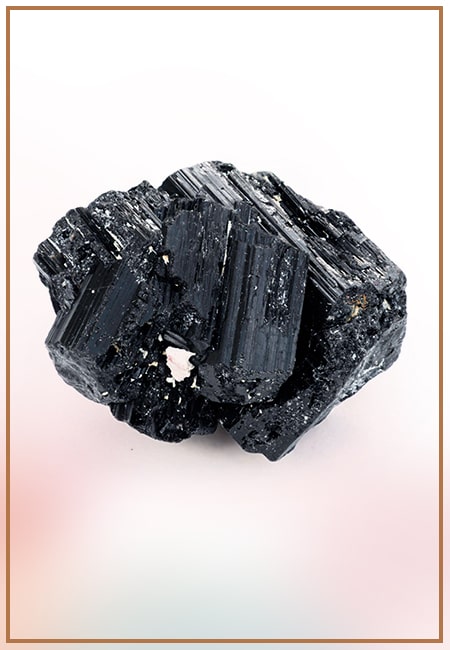
Black Tourmaline: Meaning, Healing Properties, Fascinating Facts, Powerful Attributes, Versatile Uses, and Beyond
September 05, 2023 / BY Team DWS
Black Tourmaline, also known as Schorl, is a highly revered crystal with incredible metaphysical properties. It derives its name from the Dutch word "turamali," meaning "stone with ..
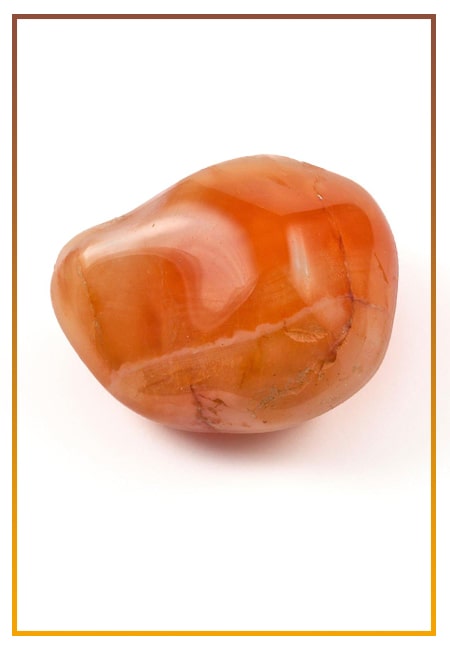
Carnelian Stone: Meaning, Healing Properties, Power, Facts, Color, Uses and More
December 26, 2023 / BY Team DWS
Carnelian is a vibrant and captivating gemstone that holds a plethora of meanings, healing properties, and powers. Its warm and fiery energy makes it a popular choice among crystal ..
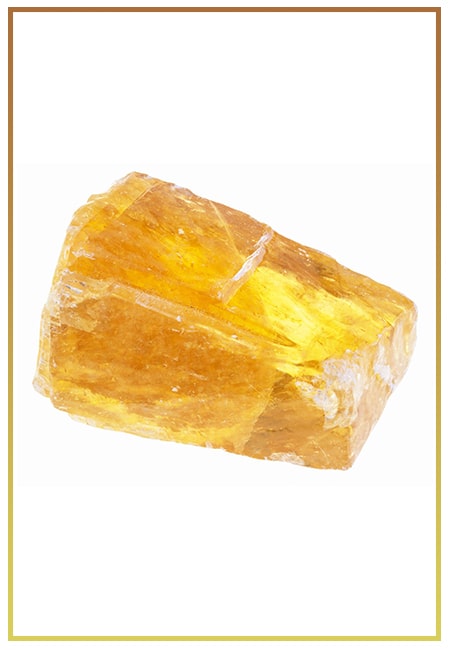
Citrine: Exploring its Meaning, Healing Properties, Fascinating Facts, Powers, Versatile Uses, and Much More
November 18, 2023 / BY Team DWS
Citrine, with its warm golden hues, has captured the attention and imagination of people for centuries. This beautiful gemstone, commonly associated with wealth and prosperity, hol ..
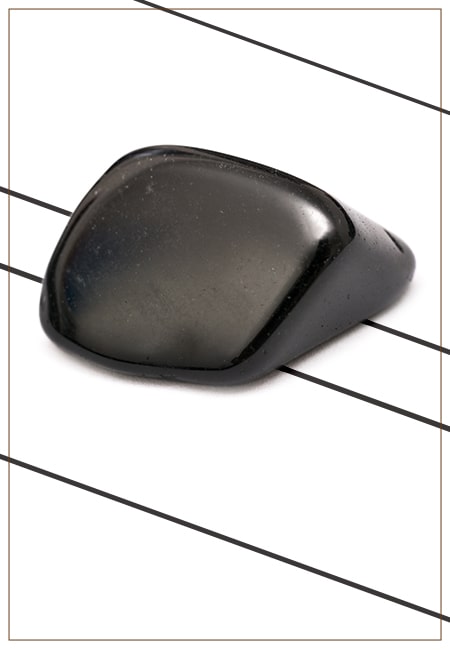
Black Onyx: Unveiling the Meaning, Healing Properties, Fascinating Facts, Powerful Attributes, Versatile Uses, and Beyond
July 25, 2023 / BY Team DWS
Black Onyx, a striking gemstone admired for its deep black hue and elegant appearance, has captivated people for centuries. In this comprehensive guide, we will delve into the mean ..
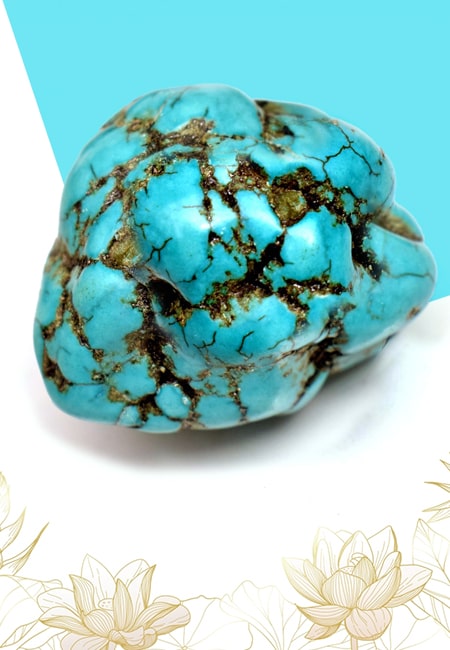
Unveiling the Mysteries of Turquoise Stone: Exploring its Meaning, Healing Properties, Power, Facts, Color, Uses, and More
December 05, 2023 / BY Team DWS
Turquoise, with its captivating blue-green hue, has been adorning jewelry and artifacts for centuries. This striking stone has a rich history, rich symbolism, and a plethora of int ..
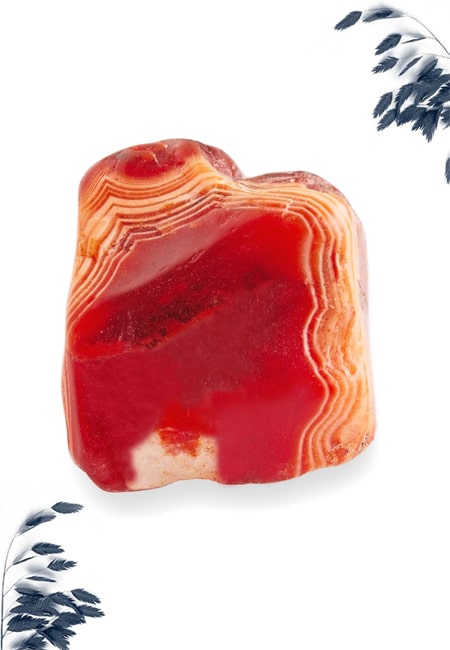
The History Behind The Popularity of Red Agate
December 23, 2022 / BY Team DWS
An Agate is a type of magma rock that takes many years till it is washed out naturally into the water. And that is the reason this stone has elements of water. This beautiful stone ..
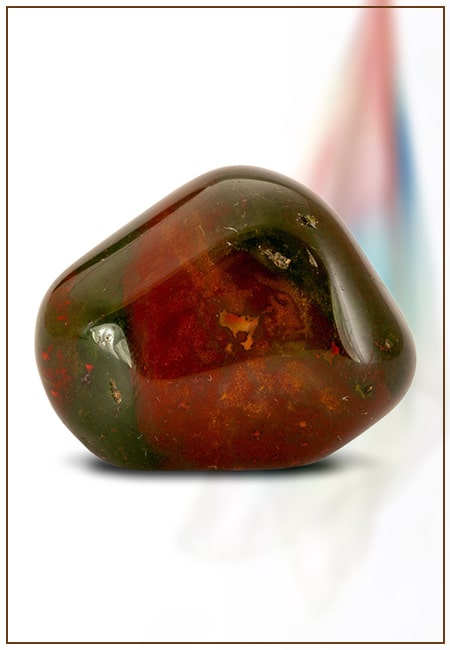
Bloodstone: Unveiling the Meaning, Healing Properties, Facts, Powers, Uses, and More
August 21, 2023 / BY Team DWS
Bloodstone, with its captivating deep green color with specks of red, is a mesmerizing gemstone that has fascinated civilizations for centuries. It possesses unique healing propert ..

Plan a Perfect Valentine's Week with Our Valentine Week List 2025
January 22, 2024 / BY Team DWS
Valentine's Day is undoubtedly the most romantic day of the year, but we believe that one day is just not enough to express your love and make your partner feel special. That's why ..


